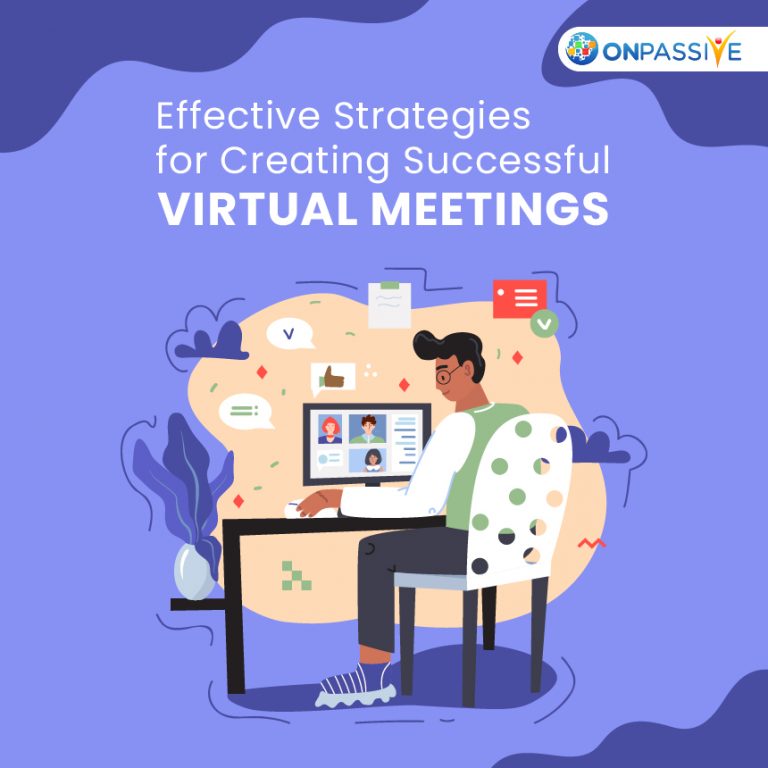
Virtual meetings are the essential video communication tools for organizational communication in the current pandemic scenario. Many organizations are still functioning remotely, and a majority of meetings and conferences are conducted virtually.
Globalization and access to technology, regardless of location, has enabled more organizations to rely on virtual meetings. The advancement of new technologies such as VOIP (voice over internet protocol) technology such as Skype and shared computer screens enables organizations to rely on yon virtual meetings.
Virtual meetings are the new normal for businesses since the pandemic situation started, and companies across the world are relying on video communication tools with the latest technologies to stay connected.
Effective Strategies for Creating Successful Virtual Meetings
Conducting successful virtual meetings is an art and crucial for the employees, and to create employee engagement and optimize the meeting experience, various elements need to be analyzed. However, employees and managers need to update their skills to adapt to the changing policies and scenario.
Some of the strategies to create compelling virtual meetings are as follows:
Create an Outline
Creating a detailed outline is key for conducting virtual corporate meetings. Including question and answers, polling and exercises in advance help the attendees of the meeting engage with the topics of the meeting.
Having essential guidelines is essential to ensure all the critical content is covered in the meeting. However, managers need to design companion materials to support virtual training for employees once the meeting is done.
Communicate Details of the Meeting in Advance
Preparation in advance is key for an effective virtual meeting. Managers need to constantly communicate with the employees about the meeting details and regularly update them with the benefits of participating in the meetings. This increases engagement and encourages the full participation of the members.
However, sending emails with the company’s newsletter and message board helps managers assure the full participation of employees in the meeting.
Clear Set of Goals and Objectives
It is crucial to clearly understand the primary goals and objectives of the attendees before planning on a virtual meeting. Organizing a meeting with the management team helps managers get a clear picture of what needs to be accomplished and the material required to achieve the results.
Incorporating topics for discussions, other exercises, and real-world examples in virtual meetings enables employees to develop required skills.
Drive Employee Engagement
Managers can enhance the virtual meetings by including Question and Answer opportunities, polling and interactivity for the attendees to increase the engagement of all the participants of the meeting.
Pre-planning the interactive sessions helps organizations drive employee retention and helps managers create a positive experience for the attendees and derive better results by enhancing their performance.
Make it Easily Accessible
A virtual meeting should be conducted in such a way that it is easily accessible for all the team members, even those who are not tech-savvy. The navigation needs to be simple, and all the members need to have a proper understanding of how to log on and attend the webinar or live event.
Recording the virtual meeting or event and uploading it on the website for future reference is another alternative to make it accessible to those who missed attending the event or meeting.
Encourage Group Collaboration
Social Media platforms like Linkedin and Facebook are great tools to support group collaborations and discussions before, during or after the virtual meeting. Having questions from the attendees or people watching the live stream enhances the value of the meeting.
Group collaboration on social media platforms motivates and encourages the participants to collaborate and discuss even long after the meeting is over.
Avoid Information Overload
The online sessions need to be as short and straightforward as possible by including only relevant information and avoid adding unnecessary topics or information that may drag the meeting or mislead the participants.
Staying on point and up to date with the topics helps participants or employees be more engaged and motivates them to be more productive. Therefore, managers need to be careful and avoid information overload in virtual meetings, especially when working remotely.
By following these seven strategies, organizations can organize or conduct online meetings more effectively while increasing employee engagement and information retention while making the meetings more interesting.
Conclusion
The pandemic situation made all the corporate organizations rely on virtual meetings for corporate collaborations. However, organizations are relying on virtual communication tools such as Zoom, Skype and various other platforms to collaborate efficiently and brainstorm important ideas.
However, managers need to use effective strategies to conduct online meetings more efficiently and maximize productivity by sharing vital information and updates with the employees in real time.


